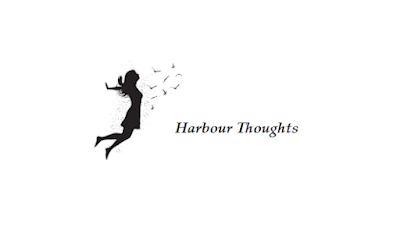The Voice and the Dusk
By Duncan Campbell Scott
The slender moon and one pale star,
A rose-leaf and a silver bee
From some god’s garden blown afar,
Go down the gold deep tranquilly.
Within the south there rolls and grows
A mighty town with tower and spire,
From a cloud bastion masked with rose
The lightning flashes diamond fire.
The purple-martin darts about
The purlieus of the iris fen;
The king-bird rushes up and out,
He screams and whirls and screams again.
A thrush is hidden in a maze
Of cedar buds and tamarac bloom,
He throws his rapid flexile phrase,
A flash of emeralds in the gloom.
A voice is singing from the hill
A happy love of long ago;
Ah! tender voice, be still, be still,
‘’Tis sometimes better not to know.’
The rapture from the amber height
Floats tremblingly along the plain,
Where in the reeds with fairy light
The lingering fireflies gleam again.
Buried in dingles more remote,
Or drifted from some ferny rise,
The swooning of the golden throat
Drops in the mellow dusk and dies.
A soft wind passes lightly drawn,
A wave leaps silverly and stirs
The rustling sedge, and then is gone
Down the black cavern in the firs.
Poem Analysis:
Duncan Campbell Scott’s poem "The Voice and the Dusk" invites readers into a lush, sensory landscape where nature and emotion intertwine. Through vivid imagery and evocative sound, Scott explores themes of beauty, nostalgia, and the transient nature of existence. The poem presents a rich tapestry of sights and sounds, culminating in a meditation on the complexities of memory and desire.
Structure and Form
The poem consists of three stanzas, each characterized by a varied rhythmic flow that enhances the musical quality of the text. The use of enjambment allows thoughts and images to flow seamlessly from one line to the next, mirroring the natural rhythms of the environment Scott describes. The alternating line lengths contribute to the overall lyrical quality, reflecting the theme of music and sound that runs throughout the poem.
Nature as a Living Entity
In the opening stanza, Scott introduces the reader to a tranquil scene marked by "the slender moon and one pale star." The imagery evokes a sense of peace and beauty, creating a contrast with the more vibrant life that follows. The moon and star symbolize distant realms and aspirations, suggesting a longing for something beyond the immediate world. The phrase "gold deep tranquilly" adds a sense of richness to the imagery, emphasizing the serene quality of the moment.
The transition to the second stanza introduces a "mighty town" characterized by "tower and spire," juxtaposing the quiet beauty of nature with human civilization. This contrast highlights the tension between the natural world and urban life, suggesting a complexity inherent in the human experience. The "cloud bastion masked with rose" conjures an image of an ethereal place where the natural and the man-made coalesce. The "lightning flashes diamond fire" adds an element of dynamism and power, further illustrating the vitality of both the natural and urban landscapes.
The Soundscape of Emotion
Scott intricately weaves a rich soundscape throughout the poem. The mention of birds, such as the "purple-martin" and "king-bird," introduces a lively energy as they dart through the air, contributing to the poem’s sense of movement. The "thrush," hidden among cedar and tamarac, produces a "rapid flexile phrase," symbolizing the beauty of nature's music and its ability to evoke emotion. The imagery of "a flash of emeralds in the gloom" enhances the idea that beauty often exists in hidden, unexpected places.
The central voice of the poem emerges in the lines, "A voice is singing from the hill / A happy love of long ago." This voice introduces a theme of nostalgia, as it harkens back to a simpler time filled with love and joy. The speaker's plea for the voice to "be still, be still" suggests a desire to preserve the past while also acknowledging the pain that can accompany such memories. The refrain “’Tis sometimes better not to know” speaks to the tension between desire and the wisdom of acceptance, hinting at the complexities of understanding one’s own emotions and experiences.
The Lingering Presence of Memory
In the following stanzas, the imagery of fireflies, "fairy light," and the "swooning of the golden throat" evokes a dreamlike quality, connecting the natural world to deeper emotional states. The fireflies, as ephemeral creatures, symbolize fleeting moments of beauty and happiness, while the "golden throat" suggests the lingering presence of memories that resonate in the dusk.
The closing lines depict a gentle, passing wind that stirs the "rustling sedge," reinforcing the theme of transience. The phrase "down the black cavern in the firs" introduces an element of mystery, hinting at the unknown and the darker aspects of life that lie beneath the surface. This final imagery resonates with the poem’s exploration of memory and the complexities of the human experience, suggesting that while beauty and joy exist, so too do shadows and uncertainties.
"The Voice and the Dusk" is a masterful exploration of the interplay between nature, memory, and emotion. Through rich imagery and sound, Duncan Campbell Scott captures the beauty and complexity of existence, inviting readers to reflect on their own experiences of love, nostalgia, and the transient nature of life. The poem serves as a poignant reminder that while moments of joy and beauty may be fleeting, they are woven into the fabric of our memories, echoing through the dusk of our experiences.
